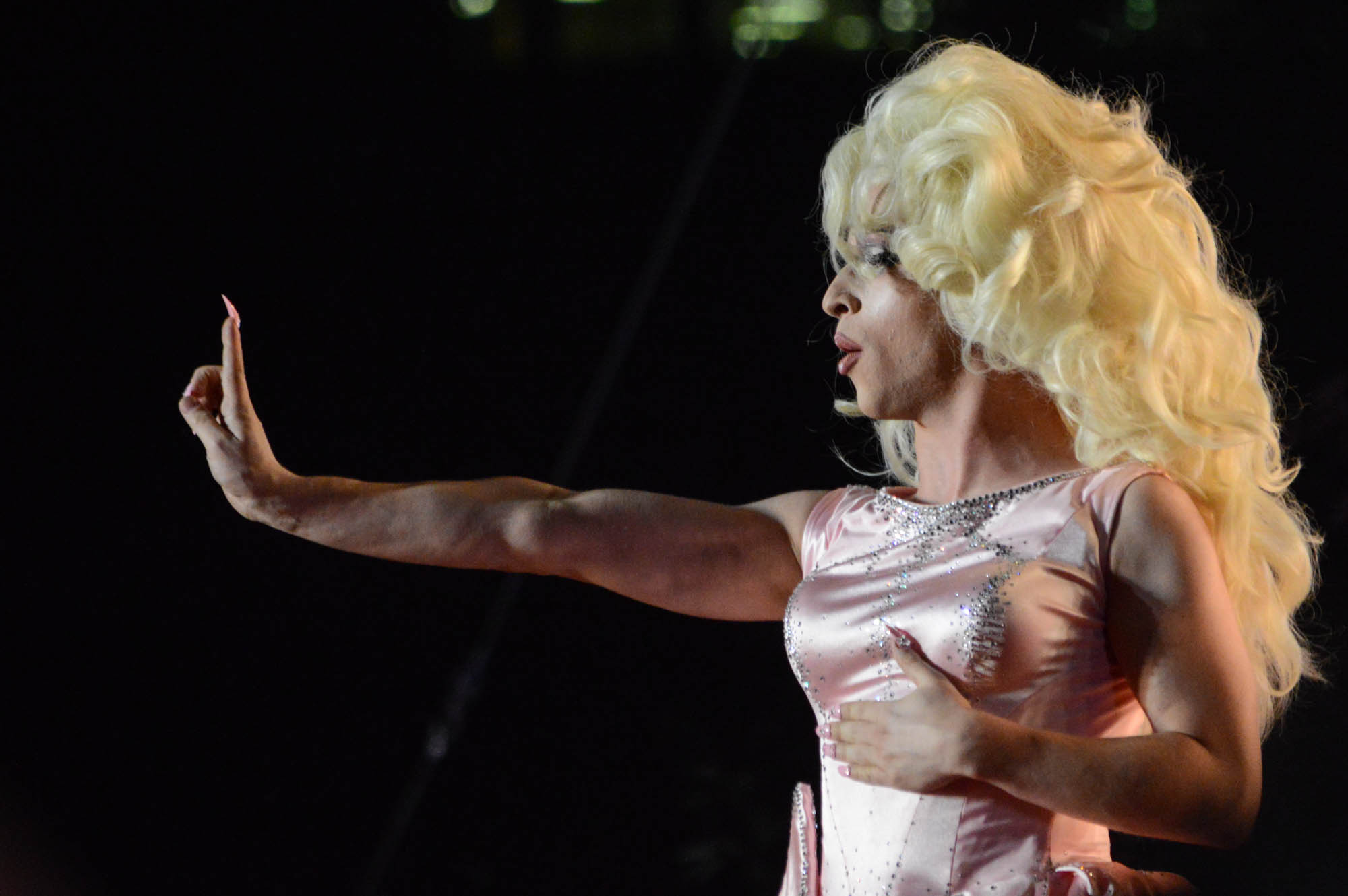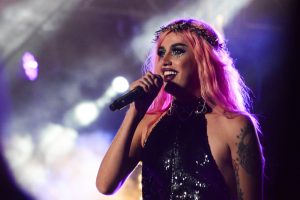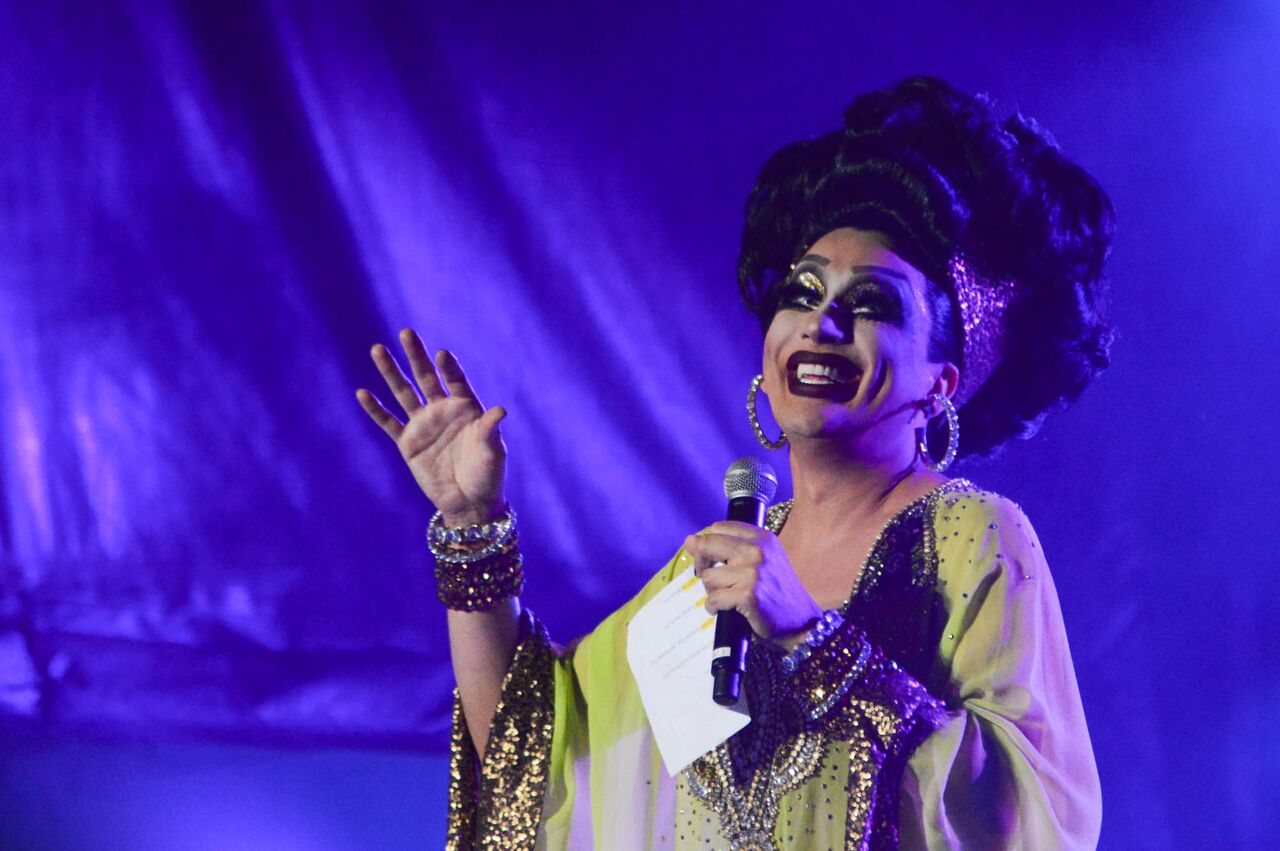Among this year’s Montreal Pride events were a variety of drag shows, including a highly attended Drag Superstars, featuring famed queens from the popular RuPaul’s Drag Race reality television show.
Through the reality TV nature of Drag Race, viewers get an inside look and understanding of the talent, effort and significance within the art of drag, yet arguably through a selective lens. While the names and success of the show’s stars remained evident at Pride’s Drag Superstars, the event also provided a clear representation of the performing queens’ talent. The event showcased the core nature of the of the art of drag and its significance within the LGBTQ+ community—sharing the true art, spirit and meaning of drag.
The three-hour-long show took place on the TD Stage at Parc des Faubourgs on Aug. 16. Hosted by Bianca Del Rio, the winning queen from season six of RuPaul’s Drag Race, the show consisted of individual lip sync and musical performances by a large number of queens from the television show, along with local Montrealers. The show was a fun, poignant event, due to the artistic individuality, the encouragement of local queens and the open discussion of serious subjects related to the queer community, such as the stigma surrounding HIV.
The show was opened by Ongina, a contestant on season one of RuPaul’s Drag Race. During her time on the show, Ongina shared with her fellow contestants and the judges that she was HIV positive. Since becoming the first queen to publicly announce her status on TV, Ongina has gone on to be an HIV activist, and other queens in later seasons have followed her path by sharing their experiences and diagnoses with the illness. As Ongina spoke to the Montreal crowd, she shared this story and spoke about how Drag Race helped her openly discuss her status and the illness. Ongina used the platform of Drag Superstars to share her experience, and used the art of drag and performance as a form of activism; a way to spread awareness on important matters prominent to the queer community and its history.
The distinctiveness and creativity within the realm of drag was showcased through the individual performances by the various queens at Drag Superstars. This individuality was shown through their painstakingly crafted visual appearances — with details distinct and individual to each queen — along with their performances and interactions with the crowd.

Highlights of the night were found in the short lip sync performances by the queens — a performance form long connected to the art of drag. Miz Cracker, a New York queen who placed fifth in the most recent season of Drag Race, performed a mash-up of pop songs interspersed with movie and advertisement clips, creating a surprising, comedic performance.

Adore Delano, runner up on season six of the show (and also previously a contestant on American Idol), performed her own songs live and threw herself into the audience to crowd surf while singing her song “I Adore U.” This further created a deep and loving connection between herself and the crowd.
Aja, a New York queen from both season nine and All Stars 3 of Drag Race, also performed her own work, coming out with a fiery performance of a multitude of her successful rap songs. Other queens added their unique spin to the performances through impersonating famous musicians. Kameron Michaels, a top four contestant on Season 10, lip synced “Believe” by Cher.
Shangela, a contestant on season two and three as well as All Stars 3, closed the show with a mix of Beyonce songs. While dressed and made up in the singer’s likeness, the queen performed the singer’s famous dance moves which showcased her immense talent as a performer.
Drag Superstars also included local queens, furthering the concept of community, acceptance and diversity. In the middle of the show, queens Rita Baga, Miss Butterfly, Manny, Michel Dorion, and Franky Dee — all Montreal performers — each took the stage for their own lip sync set. Bianca Del Rio, spoke about this, encouraging support for local and up-and-coming queens and reminding everyone that all Drag Race queens were at this place once too and needed local support to help get them to where they are now.
In showcasing the diversity of styles, talents, focuses, and the diverse representation and intense range of creativity and styles, this brought a greater theme and consideration of the meaning of Pride in the first place. These aspects of the event showed a celebration of the queer community, and messages of acceptance for all, especially in this community that faces bigotry, exclusion and violence.
The differences within the queens’ styles and performances promote messages of acceptance and support. Looking at the significance of representation, especially in media, these messages can provide reassurance and encouragement for future generations to pursue true authenticity of the self. This representation provides access to explore ideas of gender, identity, presentation, sexuality and the complexities and fluidities within.




